Improving your 6x8 HFGH
dewey1945
11 years ago
Featured Answer
Sort by:Oldest
Comments (25)
japus
11 years agomudhouse_gw
11 years agoRelated Discussions
Two 6x8 HFGH and central shed idea -- Additional suggestions?
Comments (37)A recent update from the person who received the yucca is that it is green and doing well. The transplanted cholla are doing well, of course, but it will be a while before I know if any sacaton survived. We have been making progress but not as quickly as we hoped. (No surprise there! ;-) ) We have the foundation blocks for the outside beds in place up to ground level and filled with dirt. Pavers have been placed, but not yet leveled, between the existing shed and the north edge of the foundation. We have the water and electrical stubbed in. We have the SHCS tubes in place for the outside beds of the east greenhouse and hope to start filling that section soon with the removed dirt. We have removed all planned use of poured concrete from our plans and have made this planned structure possible to remove easily while still unlikely to be blown away. (Mostly due to bolting the foundation via J-bolts to rebar under bond beam cement blocks.) DH will be checking to see what type of permits/inspections we will need for electrical, water, and structures. I suspect that it will be just water and electric. We won't fill in any more until we find out. It is getting hot already so we will be putting in the outside structure and shade cloth before the central shed and greenhouses. That way we can work in the shade. :-)...See MoreHFGH 10x12 vs 6x8
Comments (17)I have decided that I will make the 10x12 work for me; I will reinforce the heck out of it. I am going to be growing trees, I will need the height. ACK, I went by my Local HF Store today, "Just to Check", I should have my Money by Tuesday... They have the 6x8 in stock $399!, but have never had the 10x12 in stock, Granted when I gave the part number to a stock clerk, and told him that it is listed on Harborfreightusa.com, he said that it is a new item and should be stocking it soon... SOON, how soon, my 20% off coupon, expires on the 18th (Does that mean I can use it on the 18th, or that the last day I can use it, is the 17th) Sigh. I am only about 130 Miles from there Camarillo Warehouse, I wonder if I can do a will-call, and use my 20% off retail store coupon... Leme see, 260 miles round trip call it 9 gallons of gas, at 2.60 a gallon, call it $24 bucks for gas, and 3.5 hours of Driving, one hour for The hassle at will call. Oh, I can not forget the Stop at Canters Deli for lunch for me and my helper, so add another hour, and another $40. Oh wait, I cannot use my car (3 door Saturn, I do not think the big metal framed box will fit in it, so I have to take my wifes truck, Yeah my wife has the truck, what can I say, she is a Red Neck Woman, I think Gretchen wrote that song for her, but my wife is better looking.) Ok where was I, oh yeah Driving the Truck, well I can still average 75 MPH, but the mileage is gonna suck, so that would be $40 bucks in gas SO $40 for Gas, $40 for Lunch, and 4 and a half, ok call it 5 hours of my time... Hmm, well there are about 9 HF Stores, (other than my local store), that are 30-75 miles away, I guess I am gonna have to break down and do that old fashioned thing and let my fingers do the walking. I hope they have it for the same price as the Mail order site. Yeah, I found out on this site somewhere that the www.harborfreight.com site is for mail order/web order prices only, and the www.harborfreightusa.com sight is for retail stores, but it only shows stock items (Not what is in stock, but what they can stock), and they do not show the prices. So does anyone live out here in Southern California, and want a free meal at Canters, and Corned beef and cabbage (my wife makes a Wicked corned beef, she slow cooks it all day), oh yeah and lots of Guinness. (Most of the Guinness will be after it is built. I will be taking lots of Pictures, and using the extra reinforcing mentioned elsewhere on this site. I will also be sinking the Frame (But on wooden supports. I will be sealing the open edges of the Panels with 100 Mile an hour tape (Also know as aluminum tape I think), and then running thin weather-stripping along the inside edges of the panels. I will buy a couple packages of Extra Spring Clips from Charlies, and probably screw in the panels on the roof, since they will not be easy to remove for the summer months. I will probably add extra Triangle corner reinforcing, Guy wires with those funny twisty things and some nice big anchors into the ground. I have a 220 GFI for my Hot Tub near where I will be building it, but I probably should not tap into that for the greenhouse. I do have a couple of Blank spots in my fuse box (Why do they still call them fuse boxes... oh yeah I think they are called breaker boxes now), it was easy for the Guys to run the Power to the Hot Tub (About 15 minutes), but then thats what these guys do for a Living. I probably will not need power to the greenhouse, till Fall anyhow, I will be removing panels and using shade cloth for cooling in the summer. One corner of the greenhouse will be just past one of my Spare Sprinkler heads, so I can tap into that for water, and if I install timers inside the greenhouse, I can have different watering schedules for the watering and the Misting... I assume that is what I should do. One other thing I will be doing is running an extension from the clothes dryer vent to the greenhouse to have the clothes dryer exhaust into the greenhouse... Free Heat and moisture. (Most of our clothes washing happens late at night anyhow. I figure I will till up the ground where the greenhouse is going (Should make leveling it easier), and then I will be flooring it will all the shingles that blew off my roof over new years weekend. Ok, what I am I missing, ahh yes, orientation, if I remember correctly this greenhouse is 10 feet wide, and 12 feet deep. The greenhouse will be about 8 feet south of my garage (I already can see that gap is gonna become a place where you toss all the crap for the back yard, but it would make a good place to park my Garden Tractor). The winds here come out of the South, Southwest, I was thinking of Orienting the Greenhouse so that the door is facing west, I figure that would be better than south, and having the door on the east or north side would be awkward. Does this orientation sound ok? Or should I really put the door on the North side? Now a question for those who have built a 10x12,It is hard to tell from the Instructions, but it looks that the secondary brace for the vents is a separate piece of metal, so would it be possible for me to put all for vents on one side (In this case the North Side), of the roof? I do not think that having those vents facing south and opening up into a 40 MPH wind would be too healthy for the vents or the greenhouse (I am imagining a balloon being rapidly inflated), plus the wind blowing across the vents on the North Side would provide a Nice Low Pressure area, increasing the effectiveness of vents on that side. Am I missing anything (other than the greenhouse kit?) any suggestions, corrections, or Ideas. Sorry about writing books, hopefully most of you find it entertaining, rather than annoying...See MoreHFGH 6x8 Shade Cloth Solution
Comments (15)Hello Mudhouse, Good to hear from you again. I wanted to tell you how impressed I am with your 10x12 shown on another posting. If I had more space... Your Director of Construction is clearly skilled. Good choice! I think the 2x2 redwood would be really nice. If I were a better carpenter, I'd go with the aesthetic of redwood. My wife and I have found the view of the terra cotta pots seen from the outside is a nice feature in the garden. I think that the aged redwood would have an equally nice appeal. Of course, the rubber coated shelving is easy, durable, and immediate. Heck why not two of those, and one long redwood bench. Could be really nice. The "storybook setting" is a recent change. I re-did my yard this year. We had two goals in mind. 1. Buffer our house from the street. This meant removing the front lawn entirely, and planting an apron of california native plants that will eventually form a thicket - a sort of natural living fence. 2. Have the home in the center of the habitat. This is accomplished by making the front yard as interesting a garden as the back. I figure from a birdseye point of view, the yard looks like a great place to hang out. The results of this effort have been noteworthy. We have everything from nesting Barn Owls and Blue Jays, to a well balanced eco system. The yard is 100% natural/organic. All weeding is by hand, and the critters seem to take care of each other (good for some, bad for others). At any given time, you might see 6 species of birds. I said to my wife the other day that our yard has become an "experience". Best, DG ps...looking into the cost of high-quality faux fur....See More25k btu in a 6x8 hfgh too much?
Comments (34)I'm in zone 4, have a glass 8 by 12 foot greenhouse, not sealed well. I have a 30,000 vent free propane heater,that I only use last week in March through middle of April for seedlings. During the day, if the sun isn't out, it usually stays on pilot. It does come on a lot in the night. It really doesn't blow heat out far from the heater, it goes almost straight up so I don't have to worry that much about it being too close to the plants. I have to put it about 1/3 of the way towards one end, otherwise the rising heat makes my auto vent open up. I usually use about one 20lb. tank every 2 days in March, then it begins to last longer when it gets into April. The longest it lasts is 4 days, and then I usually turn it off during the daytime, and relight at night. It keeps my gh at just about 55 in the night, not much more. The pilot stays on at around 50 or higher. I try and rotate 3 tanks so I don't run out. I don't bother with large tanks since I only heat it for 3 weeks or so. I put my orchids in it for the spring-fall. I'm posting this so you can have an idea of what you might be looking at, although your house is half the size of mine, maybe this will be helpful. M...See Moredewey1945
11 years agomudhouse_gw
11 years agosteve_in_los_osos
11 years agodewey1945
11 years agomswillis5
11 years agocindy_ga
11 years agosaturn3600
11 years agomudhouse_gw
11 years agomudhouse_gw
11 years agoeastpenna
11 years agodewey1945
11 years agohartford
11 years agodewey1945
11 years agohartford
11 years agodewey1945
11 years agohartford
11 years agodewey1945
11 years agoeastpenna
11 years agodewey1945
11 years agoeastpenna
11 years agodewey1945
11 years agoeastpenna
11 years ago
Related Stories

CRAFTSDIY Project: Home Improvement Store Pop Art
Turn Drywall Mud and Paint Into a Minimalist Conversation Piece
Full Story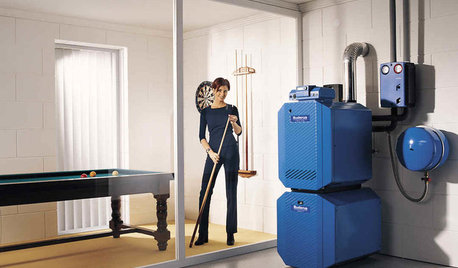
HOUSEKEEPING5 Steps to Improve Your Heating System Now
Increase your heater's efficiency and safety for lower energy bills and greater peace of mind this winter
Full Story
LIFEImprove Your Love Life With a Romance-Ready Bedroom
Frank talk alert: Intimacy and your bedroom setup go hand in hand, says a clinical sexologist. Here's her advice for an alluring design
Full Story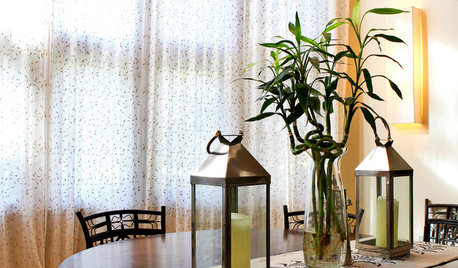
DECORATING GUIDESImprove Your Style Fortune With Lucky Bamboo
Serve this versatile plant straight up or with a twist for auspicious living decor that thrives without soil
Full Story
REMODELING GUIDESStaying Put: How to Improve the Home You Have
New book by architect Duo Dickinson shows how to remodel your house to get the home you want
Full Story
DECORATING GUIDES5 Ways Art Can Improve Your Room Design
Artwork can bring together the elements of a room by being a focal point, a color inspiration, a harmonizer and more
Full Story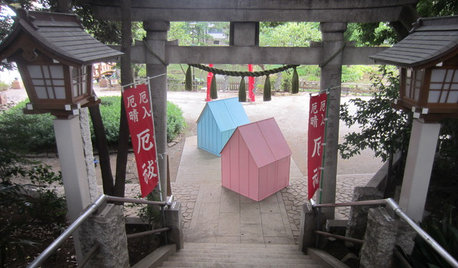
DESIGN FOR GOODShelter in a Storm: Architects Improve Global Disaster Relief
Temporary housing takes a well-designed turn with affordable, easily stored structures that address privacy
Full Story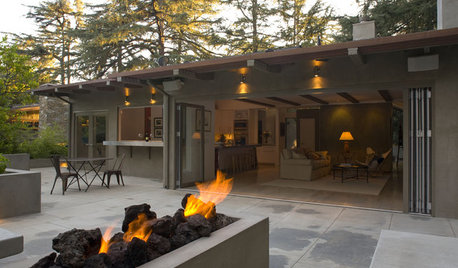
GARDENING AND LANDSCAPINGWant More Party Space? 5 Tips to Improve Indoor-Outdoor Flow
Expand your home's entertaining area without adding on by boosting connections between inside and out
Full Story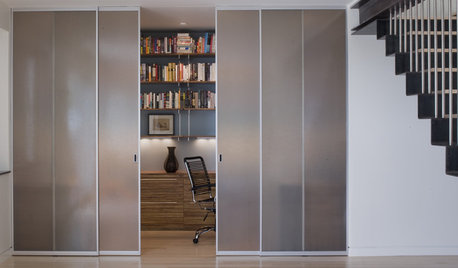
HOME OFFICESWork Smarter: 8 Ways to Boost Focus in a Home Office
Household distractions may be diverting your mental energy. Turn off the TV and tune in to these ideas for improving attention
Full Story



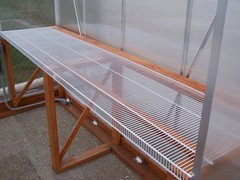
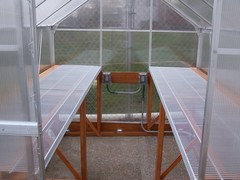
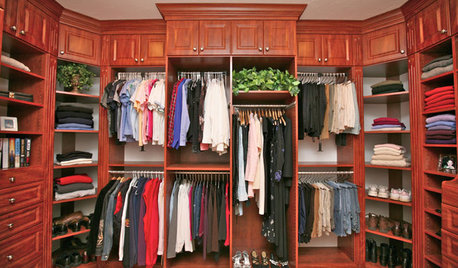

hartford